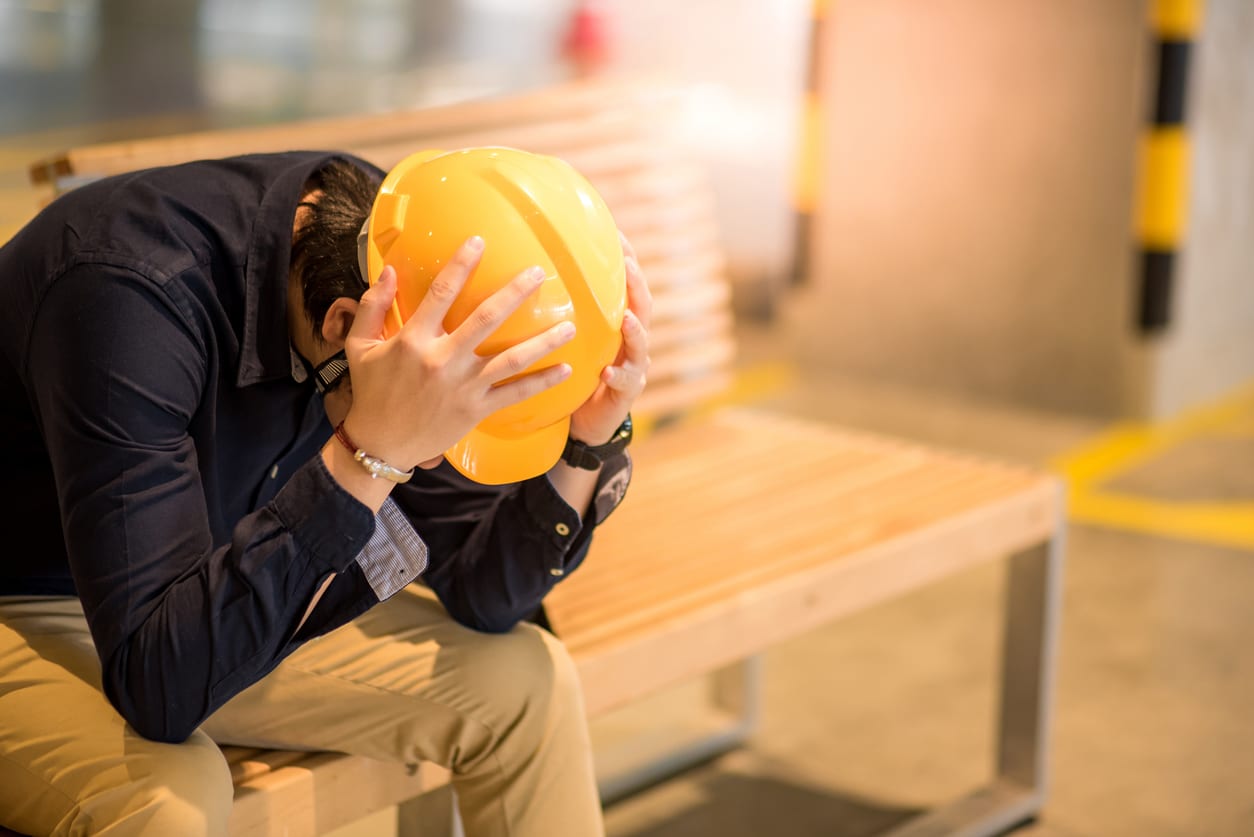

What is Burnout in Construction?
Burnout is the state of emotional, physical, and mental exhaustion caused by excessive and prolonged stress. It begins reducing your productivity and then impacts different areas of your life, including in the workplace.
Burnout doesn’t happen overnight, and it’s a gradual process that is subtle to begin with before it starts to compound. In the fast-paced construction industry, it is hard to notice the signals because you’re continuously meeting the demands of your employer and working long hours.
If you are experiencing burnout regularly working in the construction industry, you are not alone.
A 2018 study by Swinburne University found that 29-38% of construction employees taking part were suffering from psychological illness, compared with 18% of the overall Australian population.
How the construction industry provides support mechanisms to manage physical and mental health remains a challenge for many companies. Individuals and teams can continue to reduce this by identifying burnout earlier and addressing it earlier in the process.
Common Signs of Burnout in Construction
The gradual buildup of burnout makes the symptoms harder to identify, and often your colleagues will notice them in your behaviour before you do.
Increasing demands, long hours, time pressure, and expectations to sacrifice non-work hours are the common causes of physical and mental illness.
Common signs that you are experiencing burnout are:
- Having a negative attitude at work
- Dread getting up in the morning, into work, and wanting to leave once you’re there.
- Low energy and interest at work
- Trouble sleeping at night
- Consider excuses to call in sick most mornings/evenings
- Feelings of emptiness
- Physical ailments such as headaches or body aches
- Finding unnecessary agitation toward team members and family
- Thoughts that your input at work doesn’t matter or makes no difference
- Pulling away emotionally from colleagues, friends and family
- Recurring mistakes and errors that feel out of character
- Blaming others for your mistakes at work and home
- Quitting work or changing careers is a regular thought process
- Having a short fuse and often taking it out on other people.
- Unable to shut off thinking about the worries or stresses at work
These signs are common within the 4-6 weeks after the last major break from work. When these symptoms of burnout transfer between work and home, it can lead the person to feelings that the world around them is working against them.
How Can Burnout in Construction be Minimised or Avoided
Construction is one of the most demanding industries in Australia and avoiding burnout completely will be very difficult.
Fortunately there are ways for you to minimise burnout while working in the construction industry.
Figure out what is important to you
What are you doing when you’re most happy? When does work seem easy? When does time fly?
These are indicators that you are practicing what you love doing. If there are moments that stand out, write them down to refer back to later and try to consciously incorporate them into your day.
Plan out your day
Spend 5-10 minutes writing out the plan for your day ahead and visualising what a great day looks like for you. This might happen the night before, during your morning coffee, or in the first team meeting of the day.
Establish a routine and schedule as much as possible. This builds familiarity and simplicity into your day.
This is commonly used by senior management professionals to conserve their thinking energy for important matters at work.
Find employers who share your values
Each company will have values and beliefs about employee well-being and professional care. When these align with your values and they are incorporated into your day, you will notice a natural lift in energy and longevity in stress-management.
First, you have to understand what you value before you understand whether a company matches you on these. Take time to reflect on these and write them down.
Learn to manage stress
The increased focus on stress and reducing burnout in the workplace has introduced different strategies and techniques to reduce it in the past two decades. Sharing your feelings and minor anxieties can be one way to alleviate the buildup of stress. Other techniques to reduce and manage stress include:
- Breathing and meditation exercises
- Writing notes down when you feel stresses and what the causes are
- Eating well
- Sleeping regularly
- Incorporating exercise into your day or week
Conclusion: How Can You Address Burnout
Take some time today to check in with yourself and ask ‘am I burnt out?’. If the answer is yes, choose one easy action item you can get started with right away, which might be buying a notebook and pen to begin noting the times you feel stressed.
It’s important that people around you are aware that you’re feeling burnt out to not only support you, but to hold you accountable to taking the necessary steps to help yourself. This might be the person you spend the most time with at work during the day.
For the next 7 days, write down the time you get to sleep each night, what your diet looks like, and any steps you’ve taken to create more time for yourself to rest. To recap, your next three steps are:
- Find a notebook and pen
- Tell a colleague and/or family member
- Track your rest, diet, and sleeping habits for the next 7 days
Resources to Help Manage Burnout
Organisations
Applications and Other Resources
Recent Jobs
Recommended posts


Recent Jobs
Download the 2023 Salary Guide
Over 20,000 construction professionals stay connected to industry with Conecta
